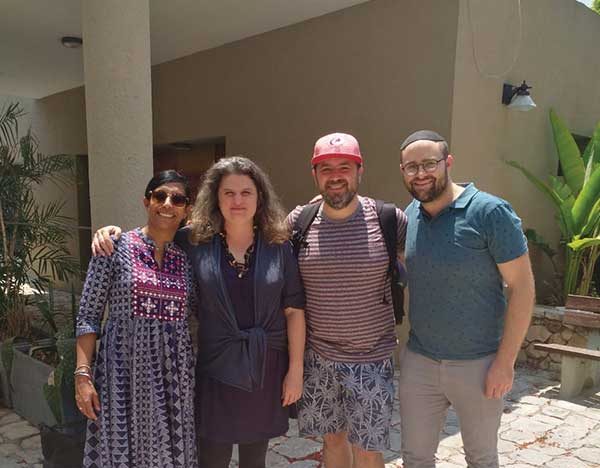Confronting ‘Jewish Identity’ today is challenging, to say the least.
With all its multi-faceted dimensions, with increasing denominational contestation, and in a 21st century reality that is shattering our preconceived ideas of identity with regards to gender, sexuality and race, it is often wiser to steer clear of the topic altogether. But it is precisely for that reason that the theme chosen for the 31st International Nahum Goldmann Fellowship was: Who am I? Constructing Jewish Identity in the 21st Century, which was held on the banks of the Kinneret from 17-23 June.
For a week, 33 current and emerging Jewish leaders from 18 Jewish communities around the world spent time delving into issues of Contemporary Jewish Identity including: rising global antisemitism, the place of Israel in their individual Jewish identities, developing an understanding of secular Jewish identity and the ‘Ashkenormalisation’ of Jewish life; gender and more. The carefully constructed programme gave both faculty and fellows the spaces to contribute and reflect on their experiences and learnings.
David Jacobson, Associate Director of the MFJC (Memorial Foundation for Jewish Culture), said “The make-up of this Fellowship was particularly diverse, as we intentionally sought to bring together the widest possible spectrum of geography, ideology and theology, including greater gender equity and Mizrachi participation amongst both Fellows and faculty.” One of the differentiating aspects of any NGF is that Fellows get the opportunity to spend real time, formally and informally, with an esteemed and very diverse, global faculty. This year, faculty included: Prof. Galeet Dardashti from JTS (Jewish Theological Seminary) in New York, Prof. Shaul Magid, from Indiana State University, Prof. Channa Pinchasi, from the Shalom Hartman Institute in Israel and Rabbi Dr. Sam Lebens, from Haifa University.
The aim of the NGF is to allow young Jewish leaders to immerse themselves in global Jewish issues through the lens of serious Jewish scholarship and with exposure to the multiplicity of Jewish identification that exist in the world today. Based on the recent 20-year research, over 81% of all alumni of the NGF felt that the Fellowship connected them powerfully with global Jewry and over 70% stated that the NGF helped them feel that despite the differences among the Fellows, we are all ‘Very Much’, one people.
The NGF is a project of the Memorial Foundation for Jewish Culture (MFJC) in New York. This year four Capetonians namely Neebashnee Krstnasamy, Gavi Ziegler, Emma Daitz and Stuart Diamond proudly represented South Africa. Today South Africa has a network of 89 fellows and is the third largest network after Israel and the United States.
The MFJC was the brainchild of Dr. Nahum Goldmann Z”l, who also created the Claims Conference, the World Jewish Congress and the World Zionist Organisation. Initially the MFJC was set up to replenish Jewish culture that was lost in the Shoah. But in the early 1980s, Dr. Goldmann presciently saw that the increasing friction and fraction within the Jewish world was beginning to present a real danger to global Jewish unity.
The Nahum Goldmann Fellowship, is designed for young Jews, ages 25-40, from all around the world, working as Jewish professionals and lay leaders, and representing the broadest possible spectrum of political and religious ideologies.
Next year NGF 32 will take place in Paris and we urge all Cape Town Jews aged 25-40 to allow themselves the opportunity for growth and learning by applying.
In the words of Prof. Steven Windmueller, Professor Emeritus of Contemporary Political Issues & American Jewish Affairs, Hebrew Union College, California “One cannot recreate an NGF, with its distinctive mix of cultures and characters, with its diversity of ideas and identities, and with the extraordinary quality of both its scholars and its students!”
To read the full PDF of the Cape Jewish Chronicle, click here
To read the editor’s column for August, click here
To read our most popular story for July, click here











